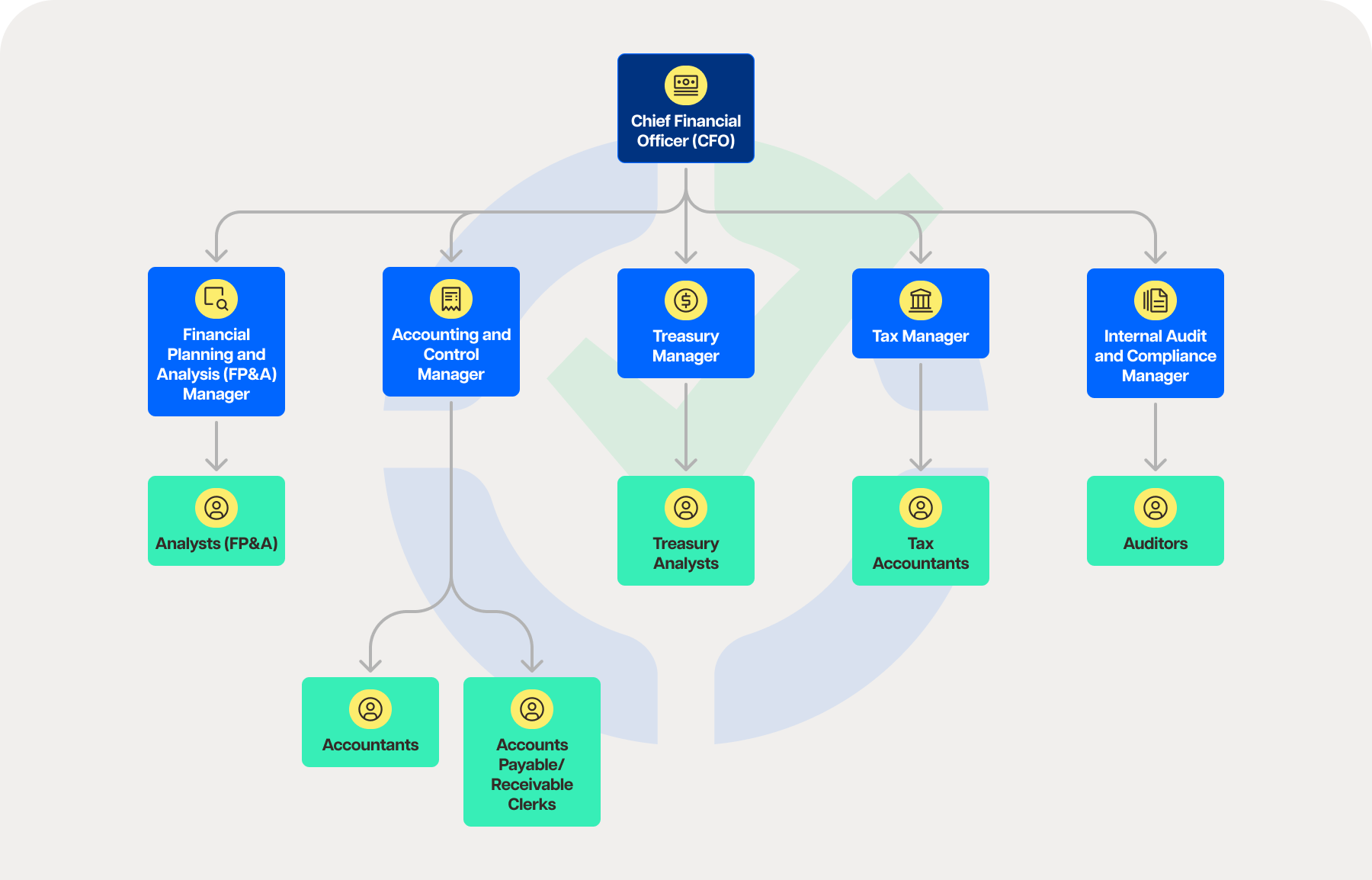Having an effectively managed finance department is one of the most important aspects of the intricate world of business management. The people who make up your finance team are crucial for compliance, strategy development, and preserving stable financial circumstances. Whether you work for a small business or a major organization, this is true. This article covers several subjects, including the need to provide your financial team with a sound structure. This piece looks at the elements that ought to be in those structures, gives you an example, and gives suggestions on how to deal with problems and put the best solutions into action.
Table of Contents
- The significance of an effective finance team organization
- Fundamental components of an effective finance team structure
- Sample finance team structure
- A well-structured finance team’s advantages
- The difficulties of organizing a financial team
- The best ways to organize your finance team
The significance of an effective finance team organization
Any company’s financial operations rely on having a carefully considered team structure in place inside its finance department. It ensures that regulations are obeyed, facilitates decision-making, and ensures plan objectives are reached. Large-scale duties like strategic leadership, accounting and control, treasury management, tax management, internal reporting, and ensuring that regulations are adhered to are typically handled by a finance team.

Fundamental components of an effective finance team structure
- Leading strategically (CFO): The Chief Financial Officer (CFO) is in charge of all the company’s money matters. They also set the company’s plan and give advice to higher-ups.
- Financial planning and analysis (FP&A): Under the direction of an FP&A Manager, the Financial Planning and Analysis (FP&A) team coordinates forecasting, analysis, and budgeting to assist in decision-making. This unit’s analysts provide reports and carry out in-depth financial analysis to support strategic initiatives.
- Accounting and control: The Accounting and Control Manager is in charge of making sure financial reporting is accurate. This group oversees all daily accounting tasks, such as accounts payable and receivable management.
- Treasury management: To preserve financial liquidity and maximize capital allocation, the Treasury Manager is responsible for managing cash flow, investments, and debt commitments.
- Tax management: Tax accountants prepare tax paperwork and offer advice on tax-related issues, while the Tax Manager oversees tax planning, compliance, and filing activities.
- Internal audit and compliance manager: Using risk analyses and internal audits, this department, which is headed by an internal audit and compliance manager, makes sure that financial policies and laws are followed.
Sample finance team structure
Now let’s examine the hierarchical organization of the positions in a financial team:
- Chief Financial Officer (CFO)
- Financial Planning and Analysis (FP&A) Manager
- Analysts (FP&A)
- Accounting and Control Manager
- Accountants
- Accounts Payable/Receivable Clerks
- Treasury Manager
- Treasury Analysts
- Tax Manager
- Tax Accountants
- Internal Audit and Compliance Manager
- Auditors

A well-structured finance team’s advantages
- Enhanced capabilities for making decisions: Stakeholders are better equipped to make decisions when there is a clear structure in place that promotes effective communication and guarantees timely access to reliable financial data.
- Better financial controls and compliance: Clearly defined roles and duties help reduce the possibility of mistakes and fraud while also guaranteeing regulatory compliance.
- Improved investment techniques and cash management: A dedicated treasury function maximizes cash flow, reduces financial risks, and increases investment returns.
- Enhanced stakeholder confidence: An organization’s credibility and reputation are strengthened when its finance team operates well, inspiring confidence in creditors, investors, and other stakeholders.
The difficulties of organizing a financial team
Crafting an optimal finance team structure brings clear benefits, yet it also presents significant challenges:
Balancing strategic and operational roles
It is critical to strike a balance between daily operations and strategic direction. Operational roles make ensuring that financial activities are carried out smoothly every day, while strategic leadership directs long-term financial goals. By striking this balance, the finance staff can efficiently manage day-to-day financial operations while staying in line with the organization’s overall goals.
Ensuring compliance and risk management in a dynamic regulatory landscape
For finance departments, adhering to constantly changing rules is a huge problem. It takes ongoing attention to detail to stay on top of regulatory developments, uphold compliance requirements, and reduce financial risks. For finance teams to properly manage this ever-changing regulatory environment, they must put strong processes and controls in place.
Adapting to technological advancements and leveraging them for efficiency
As technology improves, it changes how finance works by creating new tools and systems that make things easier and more efficient. However, it can be hard to add these technologies to current financial systems. As new technologies come out, finance teams must be able to adapt to them while also making sure that they work well with current systems. This way, they can make the most of their potential to improve efficiency and decision-making.

The best ways to organize your finance team
Optimizing your finance team’s effectiveness requires implementing best practices tailored to your organization’s needs. Consider the following strategies:
Align the team structure with organizational goals and objectives
Make sure your finance team’s organizational structure is in line with the overarching aims and objectives of your company. Strategic priorities and finance functions can be integrated to improve synergy and enable more focused decision-making.
Invest in talent development to foster a culture of continuous improvement
Encourage ongoing learning and growth among the members of your financial team. Invest in professional certifications, mentorship programs, and training to equip team members with the abilities and know-how required to succeed in their positions. By placing a high value on talent development, you can create a high-achieving team that can change with the times and meet new challenges.
Leverage technology to streamline processes and enhance efficiency
Make use of technological advancements to increase productivity and simplify financial procedures. Use state-of-the-art tools for reporting, analysis, and financial management. By drastically reducing manual processes, automation systems can increase productivity and free up time for strategic objectives.
Boost synergy and cross-functional collaboration by breaking down silos
Encourage the development of a cooperative atmosphere where members of the finance team may easily work with colleagues in other departments. To dismantle organizational silos and foster synergy throughout, promote open communication, knowledge exchange, and cross-functional initiatives. You can create new avenues for growth and innovation by utilizing the opinions and experiences of others.
By incorporating these best practices into your finance team’s structure and operations, you can navigate challenges effectively and drive sustainable success in today’s dynamic business landscape.
Conclusion
Because the finance business is so busy, it’s hard to say enough about how important it is to have well-organized finance staff. An important thing that businesses can do to help with steady growth and good money management is to build a finance team.
This can be done by clearly defining roles and duties, working together, and following best practices in the field. When you are looking at and improving the make-up of your financial team, it is important to keep in mind that you need to be flexible and quick on your feet to stay ahead in today’s increasingly fast-paced business world.

Andy is a technology & marketing leader who has delivered award-winning and world-first experiences.


